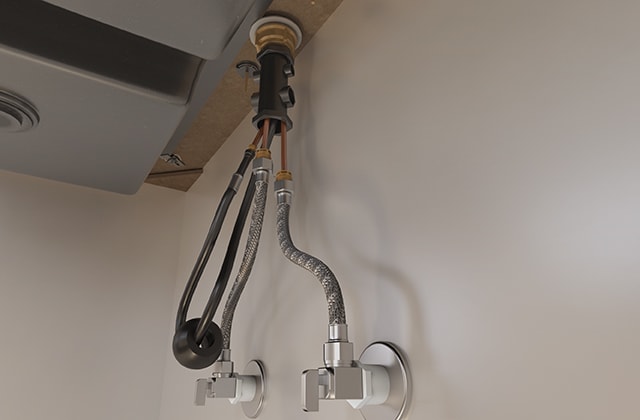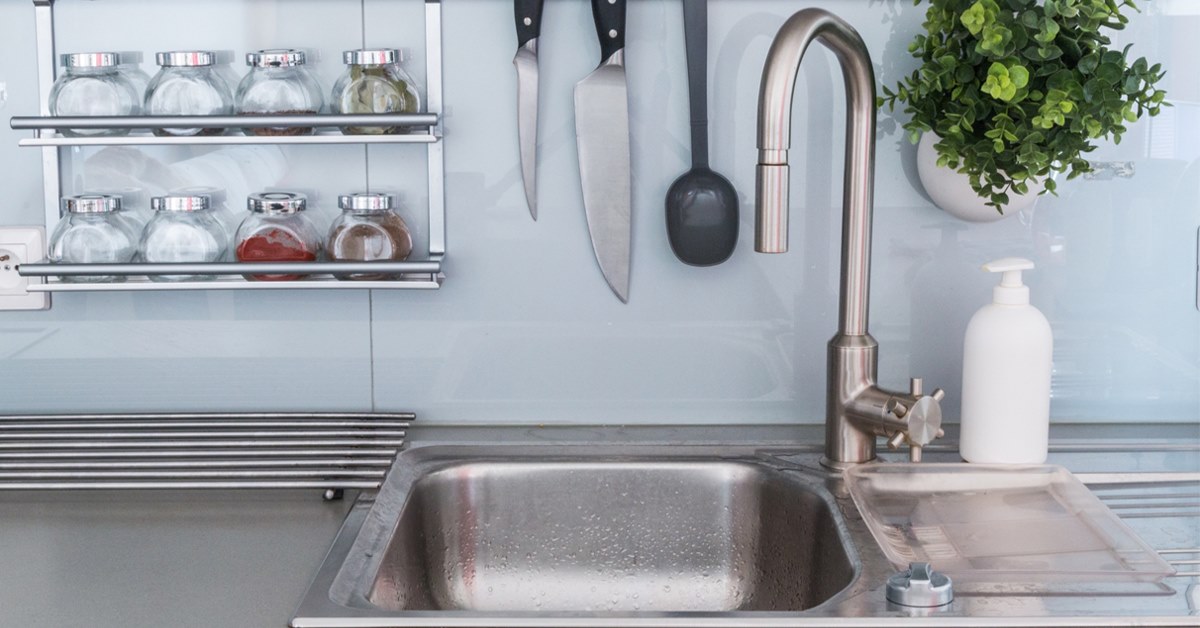1
Remove the old faucet
- 1.1 - Turn off the water supply by shutting the hot and cold stop valves under the sink. If your installation does not include valves, turn off the water to the entire house.
- 1.2 - Unplug the waste disposer.
- 1.3 - Put a bucket under the sink.
- 1.4 - Open the faucets to relieve pressure and water in the lines.
- 1.5 - Use an adjustable wrench to disconnect the supply lines from the faucet to the hot and cold valves.
- 1.6 - Use a basin wrench to unscrew the locknut holding the faucet on the sink.
- 1.7 - If there is any rust, spray with a lubricant. Wait a few minutes then loosen.
- 1.8 - Remove the faucet from the sink.
- 1.9 - Scrape away old sealant from the surface of the sink with a plastic putty knife.
- 1.10 - Clean and dry the surface.
- 1.11 - If your plumbing system does not include supply valves, install them now. Choose supply valves according to the type of connectors.
- Copper: compression-fitting valves to welded fittings because they are easier to work with
- PVC: press-joining (push-fit fitting over the pipe)
- 1.12 - If it has not already been done, replace the rigid connectors (PEX or copper) with flexible connectors.














